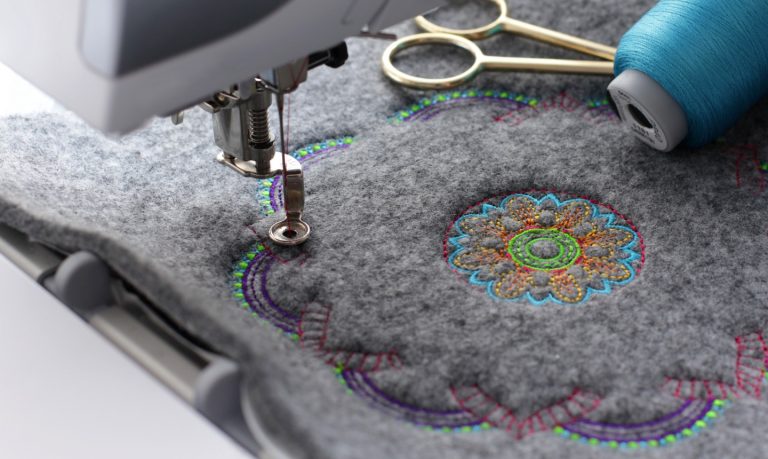High-grade Digitizing for Embroidery: Professional Craftsmanship
High-grade Digitizing for Embroidery: Professional Craftsmanship
Blog Article
Grasping the Embroidery Digitizing Refine: Your Ultimate Guide
Needlework digitizing is a thorough craft that requires accuracy and competence to convert elaborate layouts right into digital styles for equipment embroidery. As craftsmens get started on this trip to grasp the embroidery digitizing process, a thorough understanding of the basics establishes the structure for quality. Beyond the primary knowledge exists a realm of advanced software application, specialized devices, and nuanced strategies waiting to be discovered. By diving right into the subtleties of digitizing, one can open a globe of imaginative opportunities and boost their needlework tasks to brand-new elevations.

Recognizing Needlework Digitizing Essentials
Needlework digitizing essentials form the foundation upon which elaborate styles are equated into machine-readable layouts for exact sewing. This preliminary action in the needlework digitizing process is important for making sure that the final embroidered product is a faithful representation of the initial layout. Understanding embroidery digitizing basics entails realizing vital ideas such as stitch types, stitch instructions, thickness, rug, and pull compensation.
Stitch kinds play an essential duty in figuring out the visual and textural outcome of the stitched style. By choosing the appropriate stitch kind, whether it be satin, fill, or running stitch, digitizers can attain the preferred effect and enhance the total high quality of the embroidery. Additionally, sew direction influences the circulation and dimension of the layout, while thickness identifies the spacing and coverage of the stitches.
In addition, rug sewing supplies stability to the layout by protecting the fabric and protecting against distortion throughout the embroidery procedure. Pull settlement is one more important factor to consider to combat the natural propensity of fabric to agreement when stitched. Mastering these embroidery digitizing essentials is fundamental for developing professional-quality embroidered items.
Picking the Right Digitizing Software Application
Picking the proper digitizing software program is a critical decision that significantly affects the performance and top quality of the embroidery digitizing process. Digitizing for Embroidery. When selecting the ideal digitizing software program, it is vital to think about aspects such as the intricacy of layouts you intend to create, the user-friendliness of the software, the level of client assistance supplied, and the compatibility with your needlework equipment
There are various digitizing software options available on the market, ranging from fundamental programs for novices to sophisticated software application for expert digitizers. Some prominent choices consist of Wilcom EmbroideryStudio, Hatch Embroidery Software Program, and PulseID. These software application bundles supply a large range of devices and functions to assist you produce detailed designs with ease.
Prior to choosing, it is a good idea to discover the different software alternatives with free tests or demonstrations to identify which one finest suits your requirements. In addition, reading reviews and seeking suggestions from knowledgeable digitizers can give important insights into the toughness and weaknesses of each software application plan (Digitizing for Embroidery). By meticulously reviewing your needs and comparing the attributes of different digitizing software program, you can make an enlightened choice that boosts your embroidery digitizing workflow
Digitizing Devices and Techniques

Optimizing Layout Setup for Needlework
Understanding the details of layout setups is essential in accomplishing ideal cause the embroidery digitizing procedure, structure upon the foundation laid by recognizing digitizing devices and strategies. When enhancing style settings for needlework, it is necessary to take into consideration variables such as stitch kind, density, underlay, pull settlement, and enrollment. Stitch type option influences the general look of the layout, with choices like satin, fill, and running stitches providing various appearances and impacts. Density describes the spacing and thickness of stitches, affecting the layout's protection and sturdiness. Proper underlay sewing supplies stability and prevents material distortion, especially for intricate styles or on stretchy products. Pull settlement changes for fabric stretch throughout stitching, making certain precise layout replication. Enrollment settings straighten different components of the style accurately, preserving overall style integrity. By fine-tuning these style setups, embroiderers you could check here can improve the quality and precision of their stitched creations.

Troubleshooting Common Digitizing Issues
When running into typical digitizing concerns during the embroidery procedure, it is necessary to recognize the source and apply effective options quickly. One typical trouble is read what he said stitch density problems, where stitches might be also dense, creating the textile to pucker, or as well thin, leading to gaps in the style. Readjusting the stitch thickness settings in the digitizing software application can assist settle this issue.
Another regular obstacle is string breaks throughout the embroidery process. This can happen due to different factors such as wrong stress setups, plain needles, or using low-quality thread. Making sure correct upkeep of the needlework equipment, consisting of regular needle changes and tension changes, can minimize the incident of string breaks.
Additionally, layout registration mistakes can result in misaligned aspects within the embroidery style. Inspecting the style positioning in the digitizing software application and making needed changes before stitching can assist in preventing this issue. By attending to these common digitizing concerns immediately and properly, you can make certain a smoother needlework procedure and high-quality completed items.
Conclusion
Finally, grasping the embroidery digitizing process needs a solid understanding of the fundamentals, the ideal option of software application, and understanding of tools and methods. their explanation Enhancing layout settings and repairing usual digitizing problems are vital actions in ensuring top notch embroidery outcomes. By adhering to these actions vigilantly, one can attain accuracy and efficiency in the digitizing procedure.
Report this page